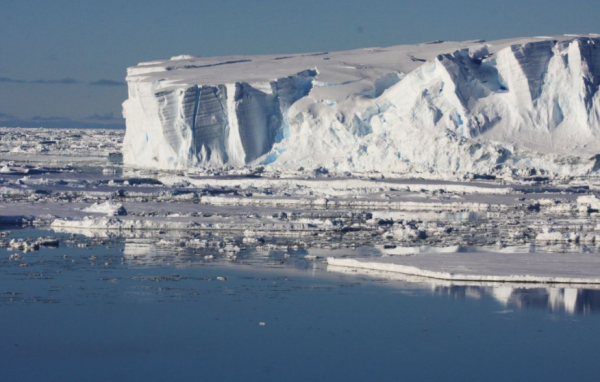New Study Finds that Present CO2 Levels are Capable of Melting Large Portions of East and West Antarctica
If you’re a regular reader of this blog and its comments section, you’re probably more than a little worried about two bits of climate science in particular:
Our understanding of past climates (paleoclimate) and 5-6 C long term climate sensitivity.
And if you’re a frequent returner, you’ve probably figured out by now that the two go hand in glove.
******
Looking back to a period of time called the Pliocene climate epoch of 2.6 to 5.3 million years ago, we find that atmospheric carbon dioxide levels were somewhat lower than they are at present — ranging from 390 to 400 parts per million. We also find that global temperatures were between 2 to 3 degrees Celsius warmer than 1880s ranges, that glaciers in Antarctica and Greenland were significantly reduced, and that sea levels were about 25 meters (82 feet) higher than they are today.
(The Totten Glacier is one of many Antarctic land ice systems that are under threat of melt due to human-forced warming. A new paleoclimate study has recently found that levels of atmospheric greenhouse gasses that are below those presently in our atmosphere caused substantial Antarctic melt 4.23 million years ago. Image source: antarctica.gov.)
Given that atmospheric CO2 levels during 2017 will average around 407 parts per million, given that these levels are above those when sea levels were considerably higher than today, and given that these levels of heat trapping gasses are rapidly rising due to continued fossil fuel burning, both the present level of greenhouse gasses in the Earth’s atmosphere and our understanding of past climates should give us substantial cause for concern.
This past week, even more fuel was thrown onto the fire as a paleoclimate-based model study led by Nick Golledge has found that under 400 parts per million CO2 heat forcing during the Pliocene, substantial portions of Antarctica melted over a rather brief period of decades and centuries.
Modeled WAIS collapse in 100-300 yrs under equilibrium 400ppm CO2 #Pliocene climate. Wilkes basin collapse 1-2000yrs
https://doi.org/10.5194/cp-13-959-2017 …

6 antwoorden57 retweets48 vind-ik-leuks
Notably, the model found that the West Antarctic Ice Sheet collapsed in just 100-300 years under the steady 400 ppm CO2 forcing at 4.23 million years ago. In addition, the Wilkes Basin section of Antarctica collapsed within 1-2 thousand years under a similar heat forcing. In total, the study found that Antarctica contributed to 8.6 meters of sea level rise at the time due to the loss of these large formations of land ice.
We conclude that the Antarctic ice sheet contributed 8.6 ± 2.8 m to global sea level at this time, under an atmospheric CO2concentration identical to present (400 ppm). Warmer-than-present ocean temperatures led to the collapse of West Antarctica over centuries, whereas higher air temperatures initiated surface melting in parts of East Antarctica that over one to two millennia led to lowering of the ice-sheet surface, flotation of grounded margins in some areas, and retreat of the ice sheet into the Wilkes Subglacial Basin. The results show that regional variations in climate, ice-sheet geometry, and topography produce long-term sea-level contributions that are non-linear with respect to the applied forcings, and which under certain conditions exhibit threshold behaviour associated with behavioural tipping points (emphasis added).
This study began the publication process in 2016 when year-end atmospheric CO2 averages hit around 405 parts per million. By end 2017, those averages will be in the range of 407 parts per million. Even more worrying is the fact that CO2 equivalent forcing from all the various greenhouse gasses that fossil fuel burning and related industrial activity has pumped into the atmosphere (methane, nitrogen oxides, CFCs and others) will, by end 2017 hit around 492 ppm.
As a result, though conditions in Antarctica are presently cooler than during 4.23 million years ago, the considerably higher atmospheric greenhouse gas loading implies that there’s quite a lot more warming in store for both Antarctica and the rest of the world. A warming that, even if atmospheric greenhouse gasses remain at present highly elevated levels and do not continue to rise, could bring about a substantially more significant and rapid melt than during the Pliocene.
Links:
Hat tip to Spike
Share this:
- 1














Geen opmerkingen:
Een reactie posten